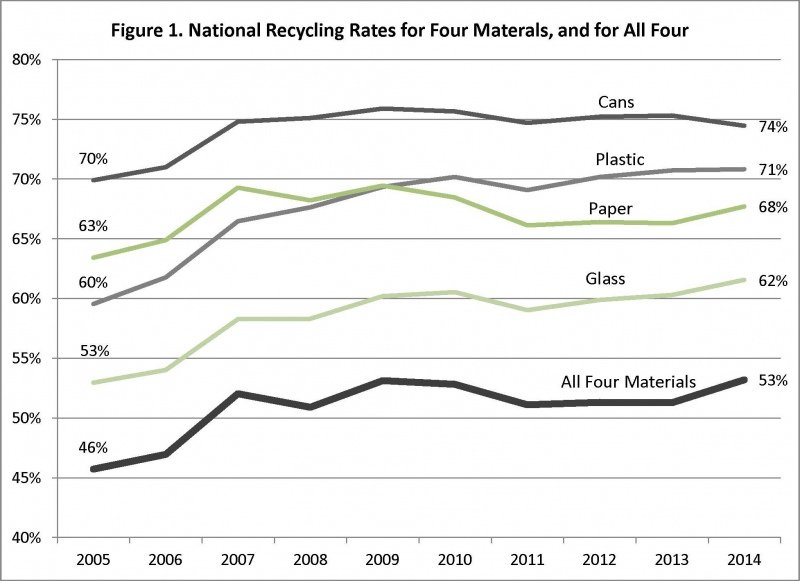Recycling is perhaps the most prevalent pro-environmental activity at the household level. Household recycling efforts may be influenced by supportive nudges and, in some cases, laws that mandate recycling behavior. But unlike efforts such as decreasing household energy usage, success in recycling also hinges on governmental support: there must be some mechanism for collecting the recycled materials and converting them into useable commodities. Government entities, and in some cases private waste collection firms, provide for these recycling amenities.
Although most states have some sort of statewide recycling laws, new recycling initiatives have not been prominent. With fewer new initiatives, has recycling behavior stabilized or perhaps dropped? In the May 2018 issue of ELR’s News & Analysis, W. Kip Viscusi, Joel Huber, and Jason Bell analyze 10 years of empirical data on household recycling trends. Their research reveals a number of important findings.
 First, there are substantial differences between recycling levels and growth, depending on whether the material is paper, plastic, cans, or glass (see Figure). Second, even absent major national or statewide changes in recycling laws between 2005 and 2014, recycling rates for all materials continued to increase over that time. Third, recycling rates differ by region, where the types of recycling laws and political party control were key determinants of recycling rates, as were influences such as population density. Fourth, the greatest gains in recycling behavior have occurred where initial recycling rates were lowest, whether for materials with lower recycling rates, for regions with lower recycling rates, for states with weaker recycling laws, or for states with initially less-favorable political climates.
First, there are substantial differences between recycling levels and growth, depending on whether the material is paper, plastic, cans, or glass (see Figure). Second, even absent major national or statewide changes in recycling laws between 2005 and 2014, recycling rates for all materials continued to increase over that time. Third, recycling rates differ by region, where the types of recycling laws and political party control were key determinants of recycling rates, as were influences such as population density. Fourth, the greatest gains in recycling behavior have occurred where initial recycling rates were lowest, whether for materials with lower recycling rates, for regions with lower recycling rates, for states with weaker recycling laws, or for states with initially less-favorable political climates.
The authors note that continued progress in recycling rates is especially remarkable in that it has occurred despite both the Great Recession and the diminished value of recycled materials. They conclude that continued improvements in recycling in areas with weaker recycling performance highlight the potential for additional increases in recycling behavior.
Download this month’s featured article free of charge.
ELI is making this featured News & Analysis article available free for download. To access all that ELR has to offer, including the full content of News & Analysis and its archive, you must have a subscription. To learn more, visit www.elr.info.
